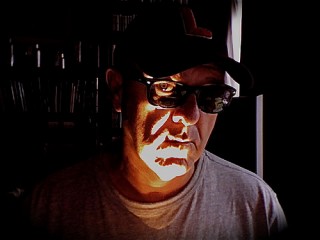
Alexander Archipenko biography
Date of birth : 1887-05-30
Date of death : 1964-02-25
Birthplace : Kiev, Ukraine
Nationality : Russian-American
Category : Arts and Entertainment
Last modified : 2010-11-17
Credited as : Avant-garde artist, sculptor, graphic artist
The Russian-American sculptor and teacher Alexander Archipenko was an innovator in translating the elements of cubist painting into sculptural form.
Alexander Archipenko was born in the Ukrainian city of Kiev. His father was professor of engineering at the University of Kiev, and his grandfather painted murals for churches. From 1902 to 1905 young Archipenko studied at the art school in his hometown. He was expelled for his rebellious nature: he had criticized his instructors for being too conservative. After working and exhibiting in Moscow for 2 years, he left for Paris at the age of 20 and entered the école des Beaux-Arts. Archipenko stayed there for only 2 weeks, as he found it more profitable to work on his own and to learn from other artists. He set up a studio near Fernand Léger's and through him came to know Pablo Picasso and Georges Braque. Archipenko shared with them an enthusiasm for primitive art, and from them he learned about cubism.
By 1909 Archipenko began to realize his cubist style. This first phase of his development displays no indecision or immaturity. His Black Seated Torso (1909) is a fine example of this period. During the next 3 years his style became fully developed, so much so that all his later sculpture tended to be variations of the forms of this period.
Archipenko favored the human female figure, but only as a convention. He interpreted it freely in abstract forms that featured convex and concave characteristics. From the beginning he liked to fuse mass and space in lyrical, rhythmic interplay so as to suggest movement. It has been said that he was influenced by the Italian futurists, notably Umberto Boccioni, whom he knew, but this seems unlikely because Archipenko never adopted the aggressively strident rhythms of the Italians.
In 1912 Archipenko made a number of figures inspired by the circus, his Médrano series. These assemblages of various materials such as wood, wire, glass, and mirror are in a quasi-cubist manner. They led to his "sculpto-paintings," in which he combined relief and polychromy. In these and other works he continued to open up voids within the solid mass of the figure, and he also juxtaposed arabesques against a static, frontal plane.
Archipenko received recognition early in his career, especially in Germany. He had his first one-man show at the Hagen Muμseum in Berlin in 1912. By 1953 he had been given exactly 100 one-man shows.
Archipenko's career as a teacher also began early. In 1912 he established an art school in Paris and soon opened a branch in Berlin. In 1923 he moved to the United States and became an American citizen. He founded the école d'Art in New York City and opened a summer art school in Woodstock, N.Y. He also taught at the Institute of Design in Chicago and numerous American universities. In 1962 he was elected to the National Institute of Arts and Letters.
It is generally agreed that Archipenko did his best work between 1910 and 1920. He was so dexterous that much of his sculpture appears facile. This is particularly true of his later work, in which he often appears to be straining for novelty and effect. For instance, in 1924 he started using motors to cause parts of the sculpture to move; he called this genre "Archipentura." His later sculpture is more complicated and decorative, and he seems to have been distracted by superficialities such as color. Archipenko revealed the extent of his virtuosity when, in the mid-1920s, he executed busts of Fritz Wickerts and Wilhelm Furtwängler in a somewhat naturalistic manner in order to capture a likeness. Archipenko continued work up to the time of his death in New York City on Feb. 2, 1964.
The only recent work on Archipenko is Archipenko: Fifty Creative Years, 1908-1958 (1960). It contains an autobiographical sketch and essays and statements by 50 art historians. For background, plates, and commentary see C. Giedion-Welcker, Contemporary Sculpture: An Evolution in Volume and Space (1955; rev. ed. 1961), and Michel Seuphor, The Sculpture of This Century (trans. 1960).
Nagy, Ildiako., Archipenko, Budapest: Corvina, 1980.
















